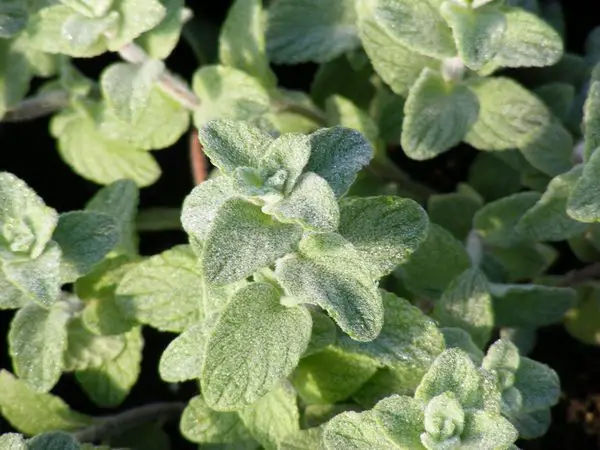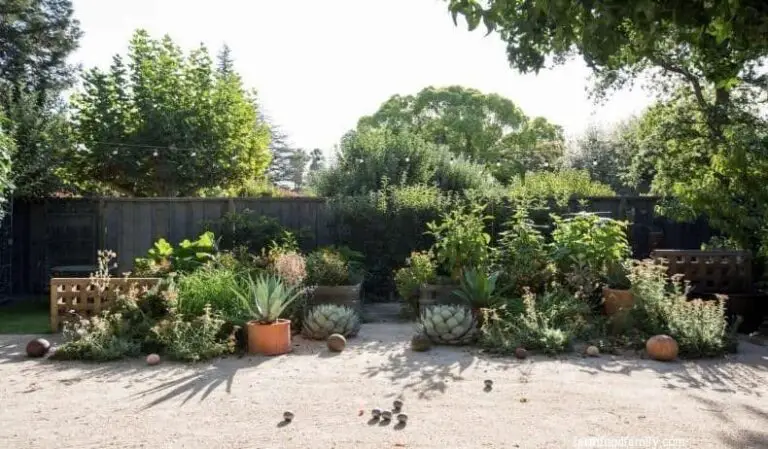Perennial Herbs: 9 Herbs That Grow In The Heat
You don’t have to abandon your herb and flower patch when the heat hits. In fact, there are many herbs and edibles that can thrive in the summer heat, providing flavor, color, zest, and zing to your meals and drinks. Mediterranean herbs like oregano, sage, rosemary, lavender, and thyme are top contenders, as are basil varieties and Asian flavors such as cardamom, ginger, galangal, lemongrass, kaffir lime, and perennial coriander.
For some inspiration, here are my top 10 heat-loving herbs: Thyme, Chilli, Greek and perennial basil, Curry leaf tree, Lemongrass, Perennial Coriander, Sage, Oregano Za’atar, Rosemary, and more. While your salad greens and Asian greens may struggle with the heat, don’t forget that many of these flowers are edible and can add bursts of brilliant color to your summer salads. Zinnias, marigolds, nasturtiums, and even the flowers of mustard and rocket are great choices.
See a solution, not a problem; let your flowers bloom for the bees and other good bugs, and use them to pretty-up your summer salads. Many of these flowering edibles will self-seed for next season, making them perfect additions to your garden.
Thyme, Thymus Vulgaris

While thyme is often considered a staple herb, the sheer diversity of species and varieties can be overwhelming. From the classic garden thyme to the unique Spanish wood thyme, which boasts a heavenly eucalyptus-like aroma, there’s a wealth of options to explore. Some thyme varieties are compact woody perennials, while others form low-growing ground covers that spread out like a carpet.
The creeping types, such as crimson, bergamot, white, and Doone Valley, make excellent choices for filling gaps between pavers and stepping stones. Other popular varieties include lemon, orange, Turkey, Pizza, Pink Chintz, Pink Matting, Orange Peel, Silver Posie, Caraway, Wild, and Westmoreland. When growing thyme, it’s essential to provide full sun and good drainage. The added bonus is that the flowers are edible and attract bees, making them a great addition to any garden or culinary endeavor.
Chilli, Capsicum Annuum

Summer’s sweetest delight is undoubtedly the flavorful chilli. Whether you prefer a subtle warmth or a scorching heat, there are countless varieties to tantalize your taste buds. Mild options like ‘Anaheim’ and ‘Poblano’ offer a delicious flavor without the intense burn, while thrill-seekers can opt for ‘Ghost’, ‘Habanero’, or ‘Tepin’ for an unparalleled kick. With hundreds of named cultivars to explore, you’re bound to find the perfect chilli to suit your palate.
When it comes to growing chillies, they thrive in hot, sunny spots and can be easily cultivated in containers for those with limited space or a sunny balcony. Just remember to provide them with ample warmth and light to encourage robust growth. For those living in subtropical regions, preparation is key. Be prepared to combat fruit flies with wick traps, Eco-naturalure spray, and exclusion bags – the ultimate trifecta of defense for 100 per cent protection.
Greek and perennial basil, Ocimum SP.

While many basil varieties thrive in warmer temperatures, Greek and perennial basil are notable exceptions, boasting exceptional hardiness and longevity. When growing your chosen basil species, ensure it’s situated in a location that receives full sun and boasts good drainage. Traditionally, the leaves are the primary component used, but there’s been an increasing trend towards incorporating the flowers and seeds into various culinary applications.
Notably, the seeds pack a potent flavor punch when added to meals or snacks, while the flowers make a charming garnish and provide a valuable source of sustenance for beneficial insects and bees.
Curry leaf tree, BERGERA KOENIGII (Syn. Murraya Koenigii)

This versatile tree is renowned for its aromatic flavor profile, particularly when used in Indian curries. With its ability to reach up to 4 meters in height if grown in the ground, it can also thrive in containers or pots to maintain a compact size. The fragrant white flowers bloom during spring and summer, but it’s essential to prune them off, especially in warmer climates, as the subsequent seeds can be invasive. It’s crucial to note that these seeds are not edible.
The leaves themselves have an intense curry flavor, which is amplified when they’re cooked with heated oil. In the cooler months, the tree may turn yellow and shed some of its foliage, depending on temperature fluctuations. To ensure optimal growth, protect it from frost and provide full sun exposure. More information about this plant can be found in our previous issue.
Perennial Coriander, Eryngium Foetium

For those who struggle with the annual soft-leaf coriander’s tendency to bolt to flower as soon as the weather warms up, Eryngium foetidum offers a welcome alternative. This low-growing perennial has a flavor profile remarkably similar to its common counterpart, Coriandrum sativum. Its rosette-like arrangement of lanceolate leaves with serrated edges earns it the nickname ‘sawtooth coriander’ or ‘Mexican coriander’.
As winter approaches, sawtooth coriander will naturally die back, allowing the common coriander to thrive in the cooler temperatures that follow. When spring arrives and the temperature rises again, it will reshoot and begin a new growth cycle. When pruning the prickly flower spikes that emerge in summer, be cautious as they are quite sharp – this will actually encourage more leaf growth. To grow sawtooth coriander effectively, provide full sun and well-draining soil.
In cooking, take note that the leaves of perennial coriander require a bit more thorough chopping due to their slightly tougher texture. They can be used in a variety of dishes, including stir-fries, curries, soups, salads, and salsas – and don’t forget to utilize the flower spikes and roots for added flavor and nutrition.
Sage, Salvia Officialis

Sage, a perennial shrubby herb with soft grey foliage, offers a world of culinary possibilities. Its versatility extends beyond its leaves, as the flowers are also edible. The herb’s beauty is further enhanced by its various coloured forms, including purple, gold variegated, and tricolour varieties.
Among the most alluring variants are pineapple sage and fruity sage. These two varieties boast incredibly aromatic foliage and vibrant flowers that are not only visually stunning but also edible.
Pineapple sage, as its name suggests, has a distinct pineapple flavour and produces bright red flowers that can be enjoyed in salads or used as a garnish. Fruity sage, on the other hand, has foliage with a fruit salad-like flavour profile and bears delightful bright-pink edible flowers.
One notable difference between these specialty sages and traditional sage is their watering requirements.
While common sage thrives in well-drained soil and moderate moisture, pineapple and fruity sages need a bit more hydration to reach their full potential.
In regions with subtropical or tropical climates, many gardeners treat common sage (Salvia officinalis) as an annual, allowing them to enjoy its benefits for a shorter period before replacing it.
Oregano Za’atar, Origanum Syriaca

The oregano family boasts a star attraction in the form of za’atar, a heat-loving herb that can reach up to 40cm high and spread as far as 1-2m wide. Its grey-green foliage is impervious to soaring temperatures, allowing it to thrive year-round. In contrast to its more subdued cousins, oregano za’atar packs a punch with its bold flavour.
Like all oreganos, za’atar and its relatives – including common oregano, Greek oregano, golden oregano, and sweet marjoram – are perennial plants that spread low to the ground. They produce either pink or white flowers in the summer months. This group of herbs is a staple in Italian cuisine, elevating dishes like pizza, pasta, and casseroles with its pungent flavor.






